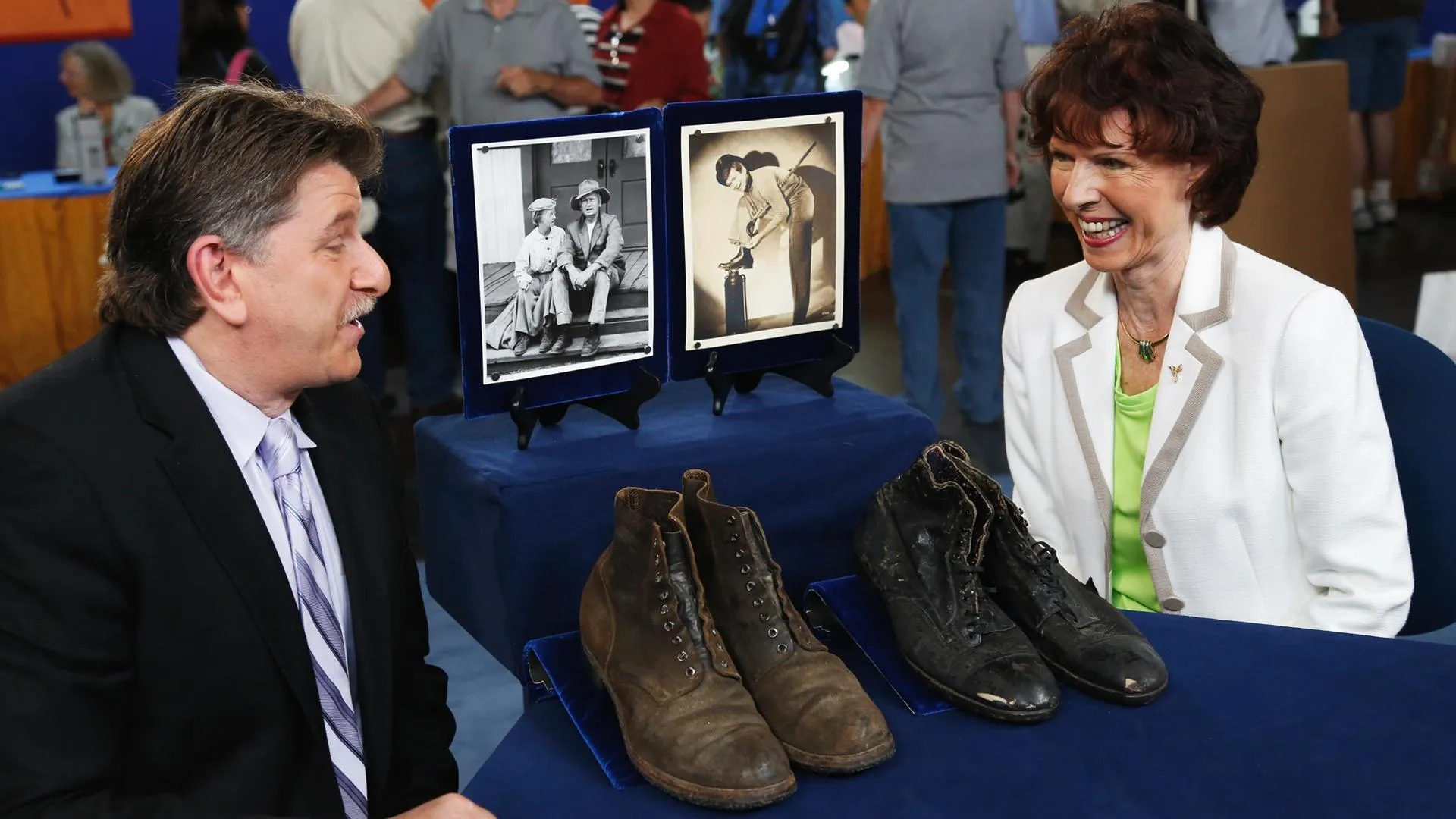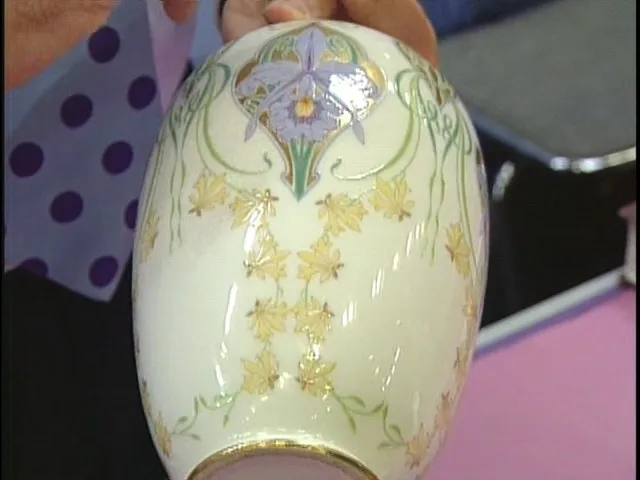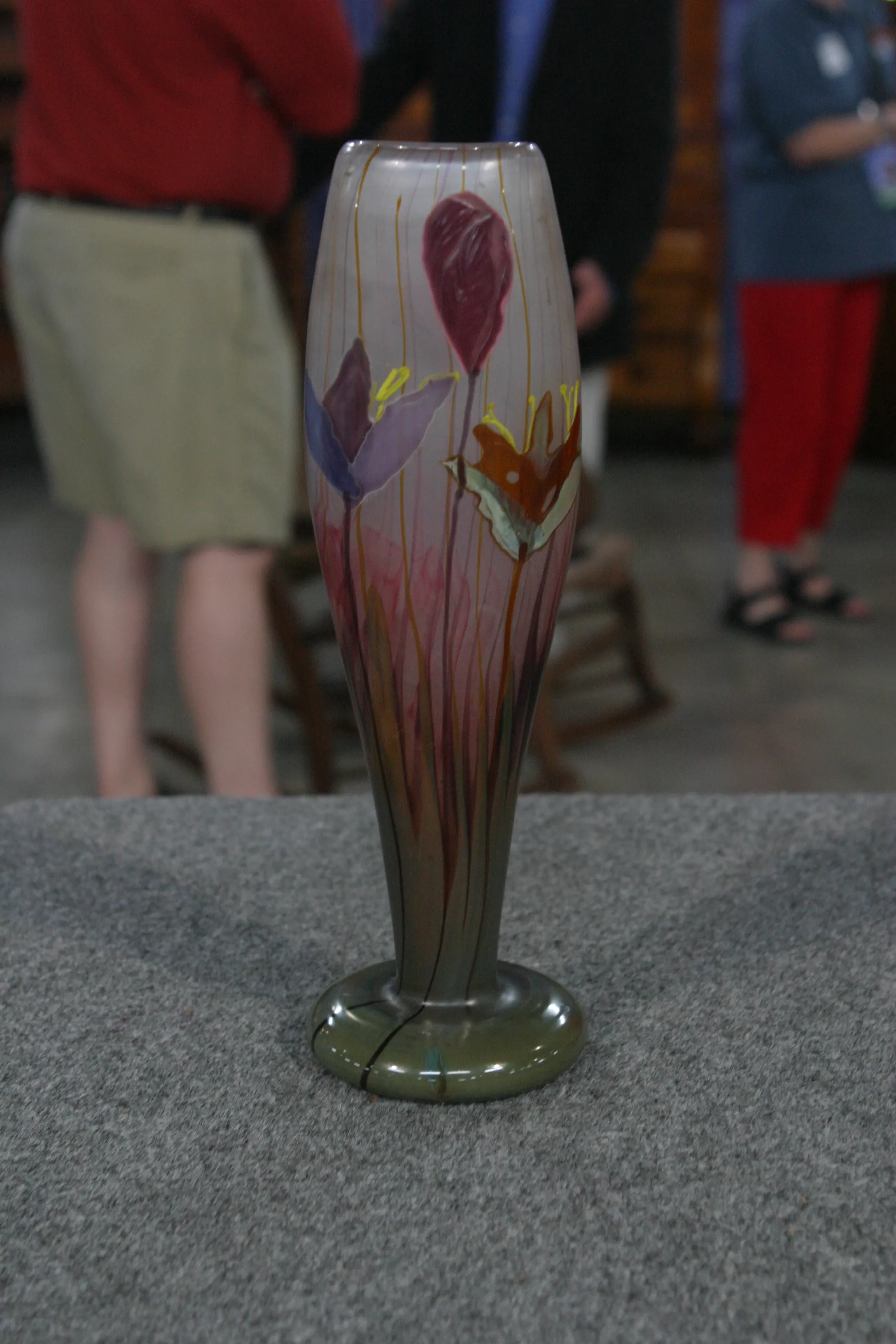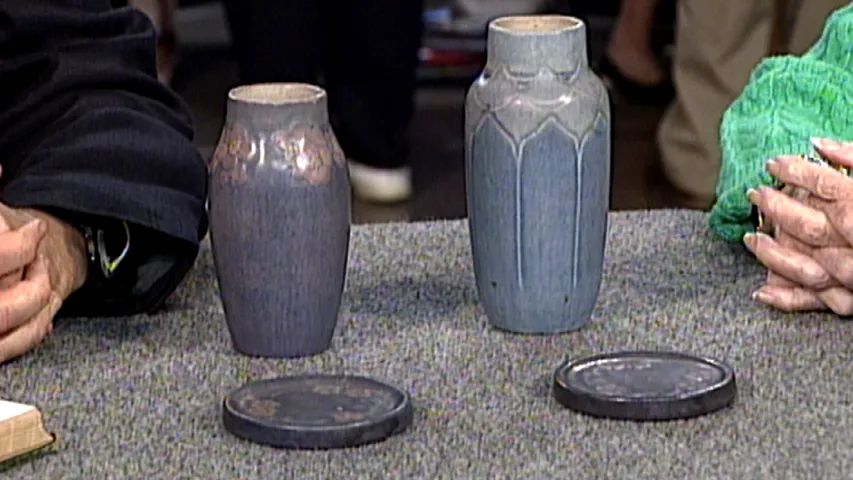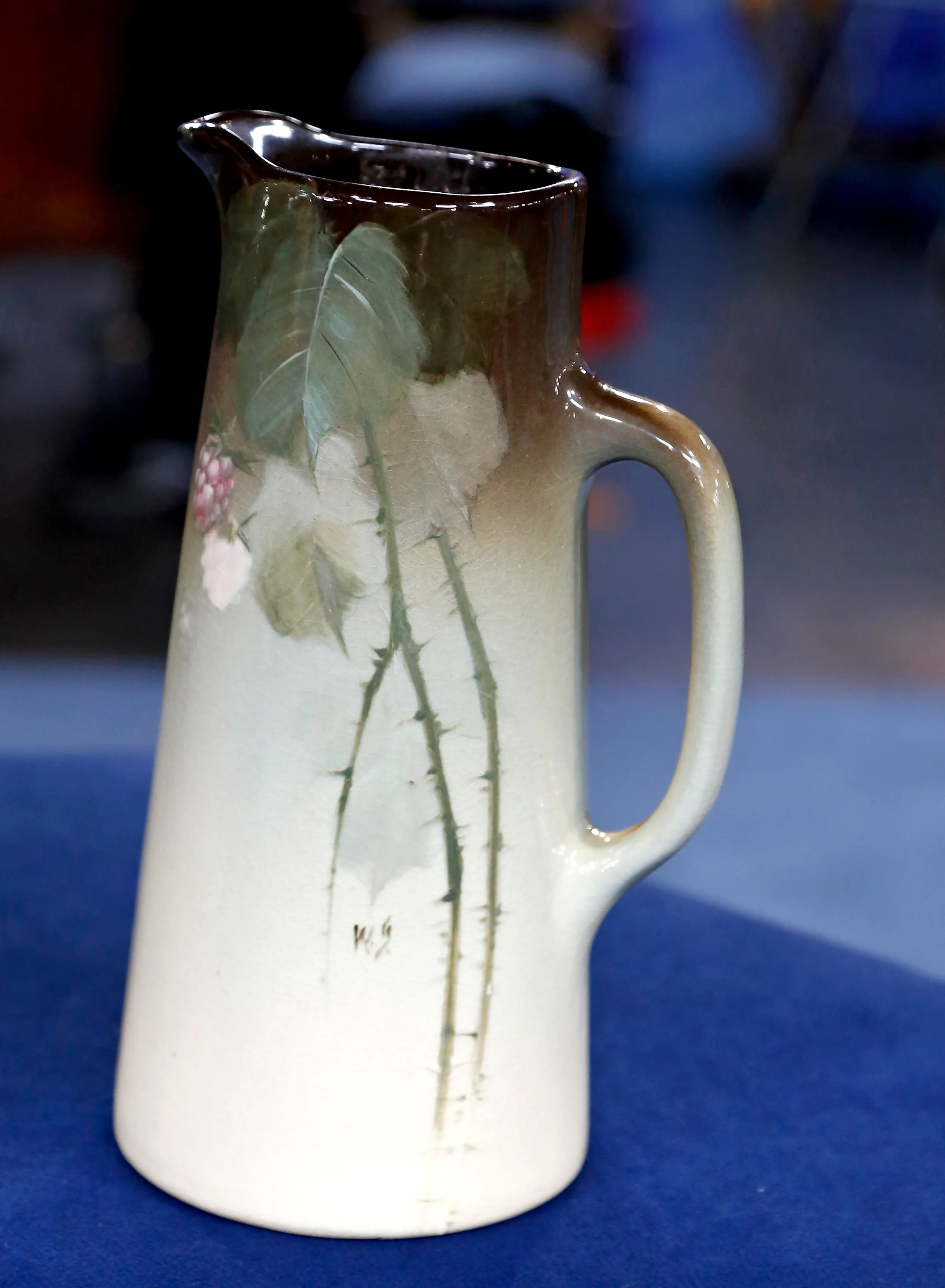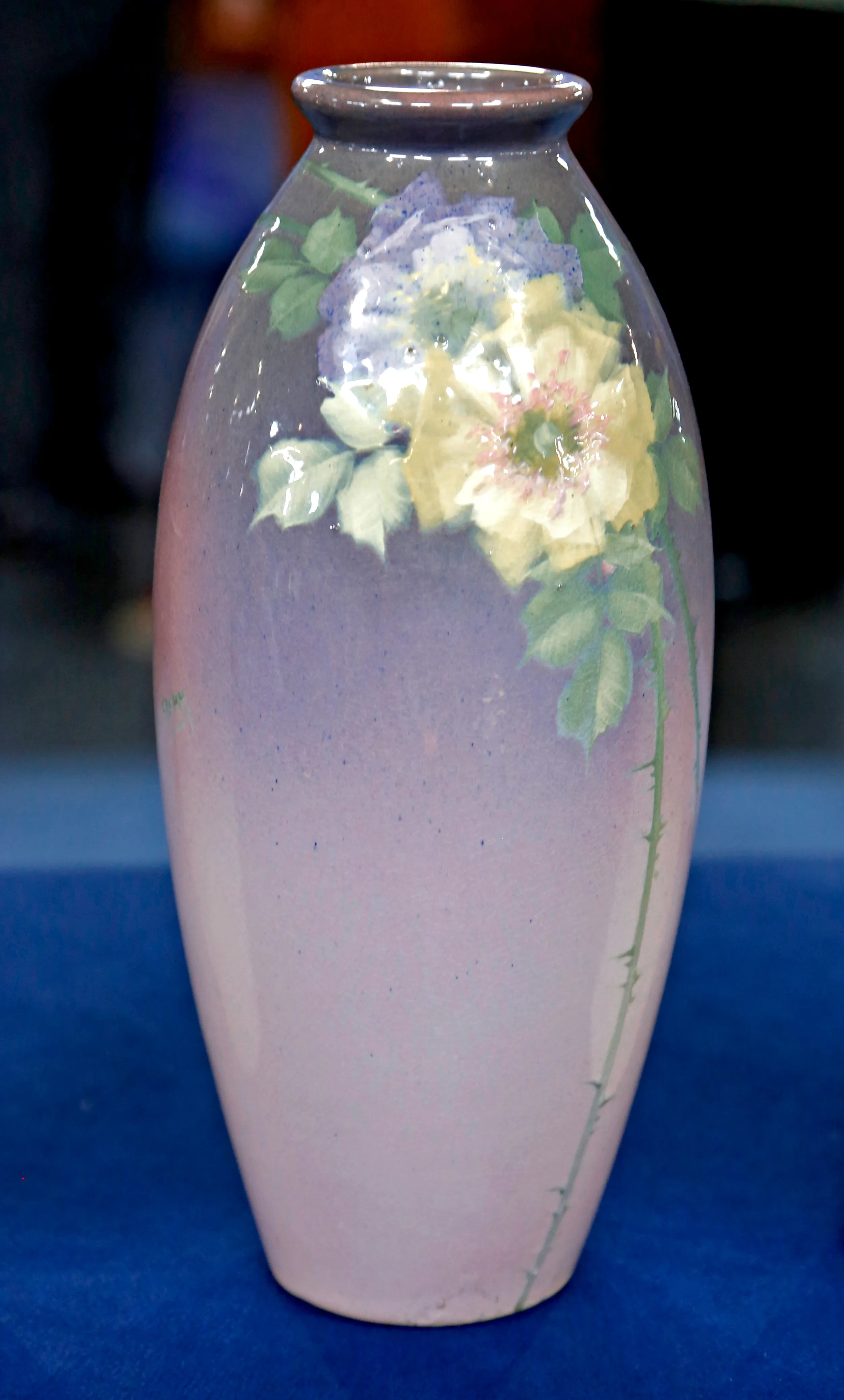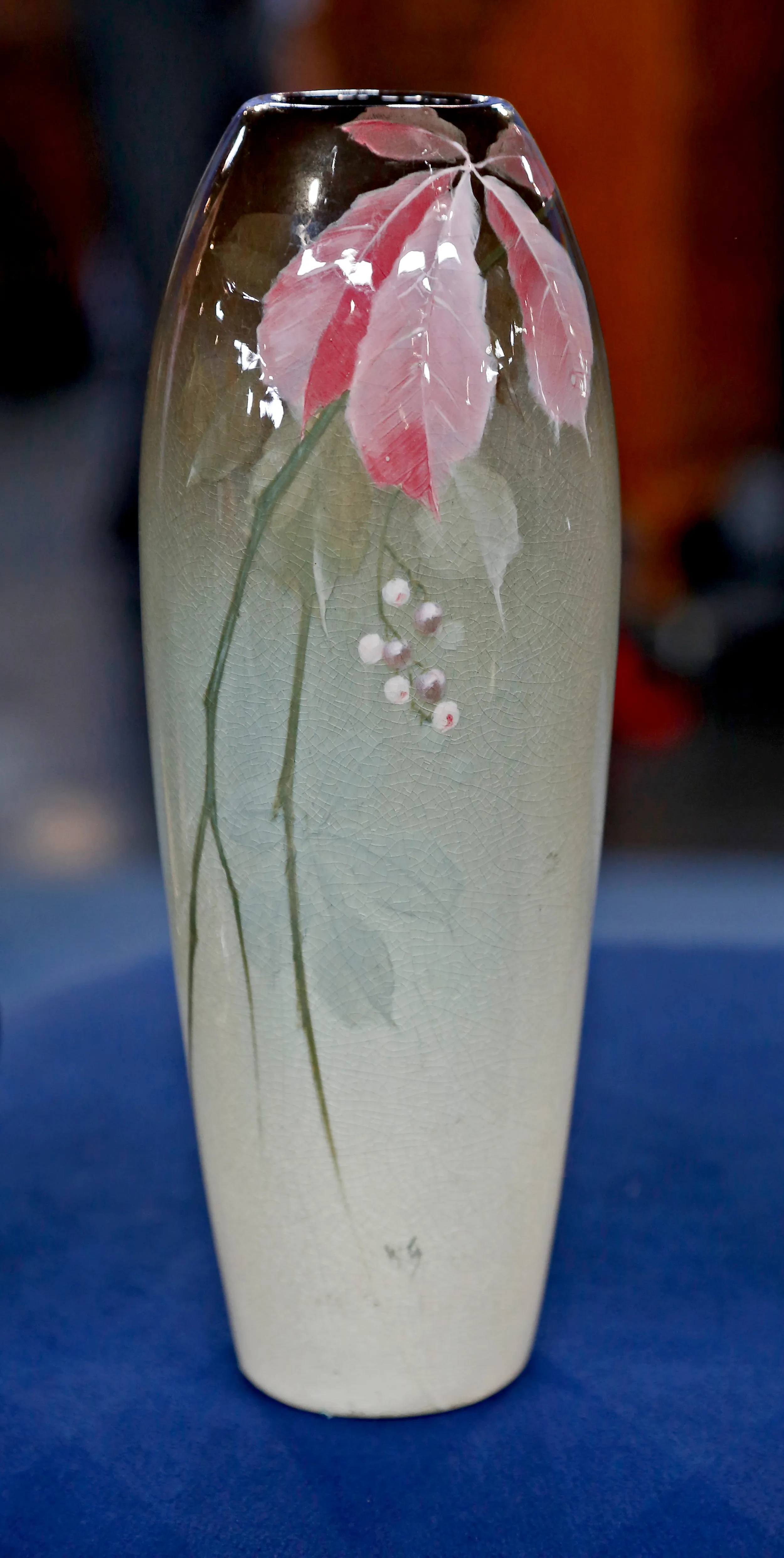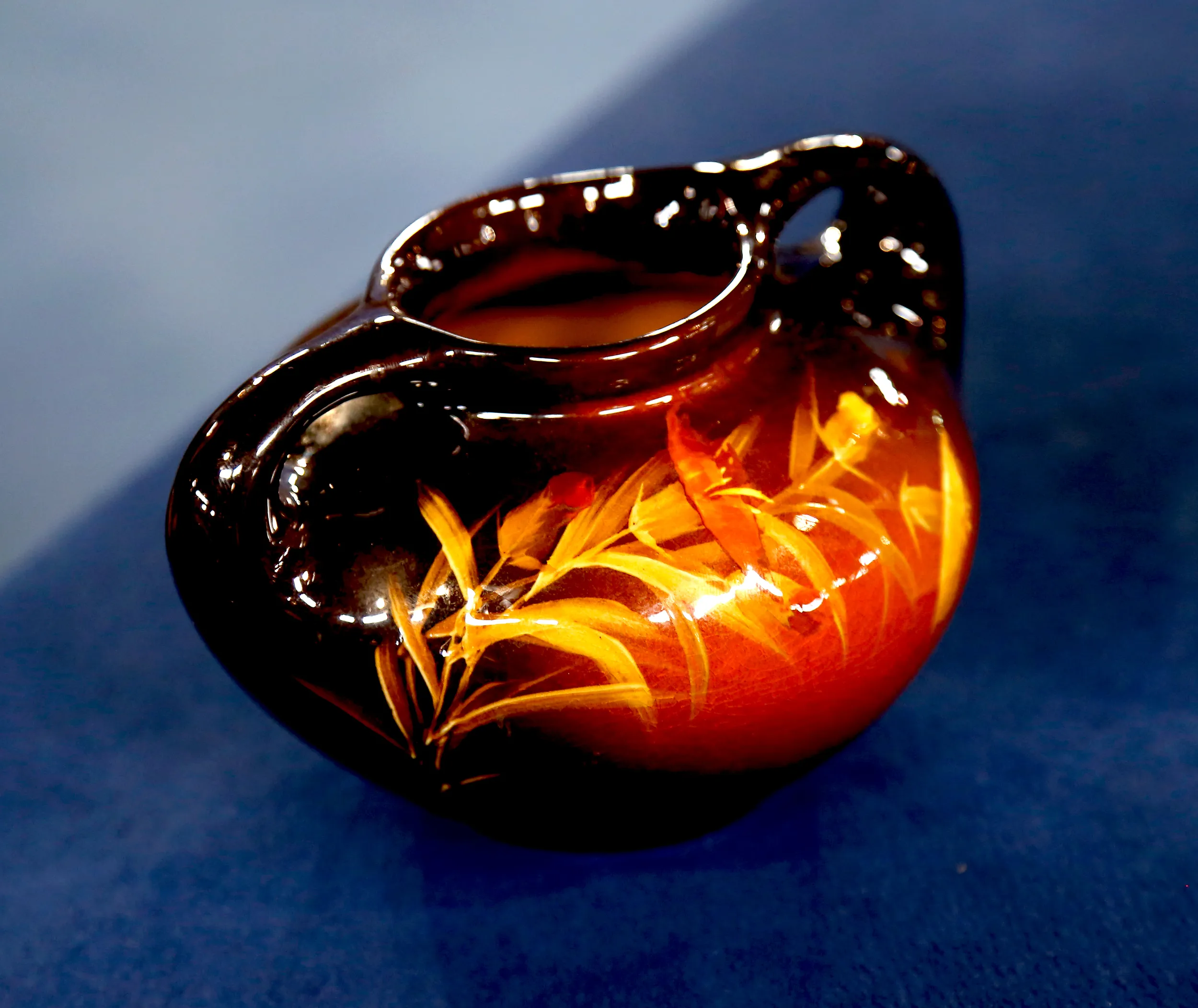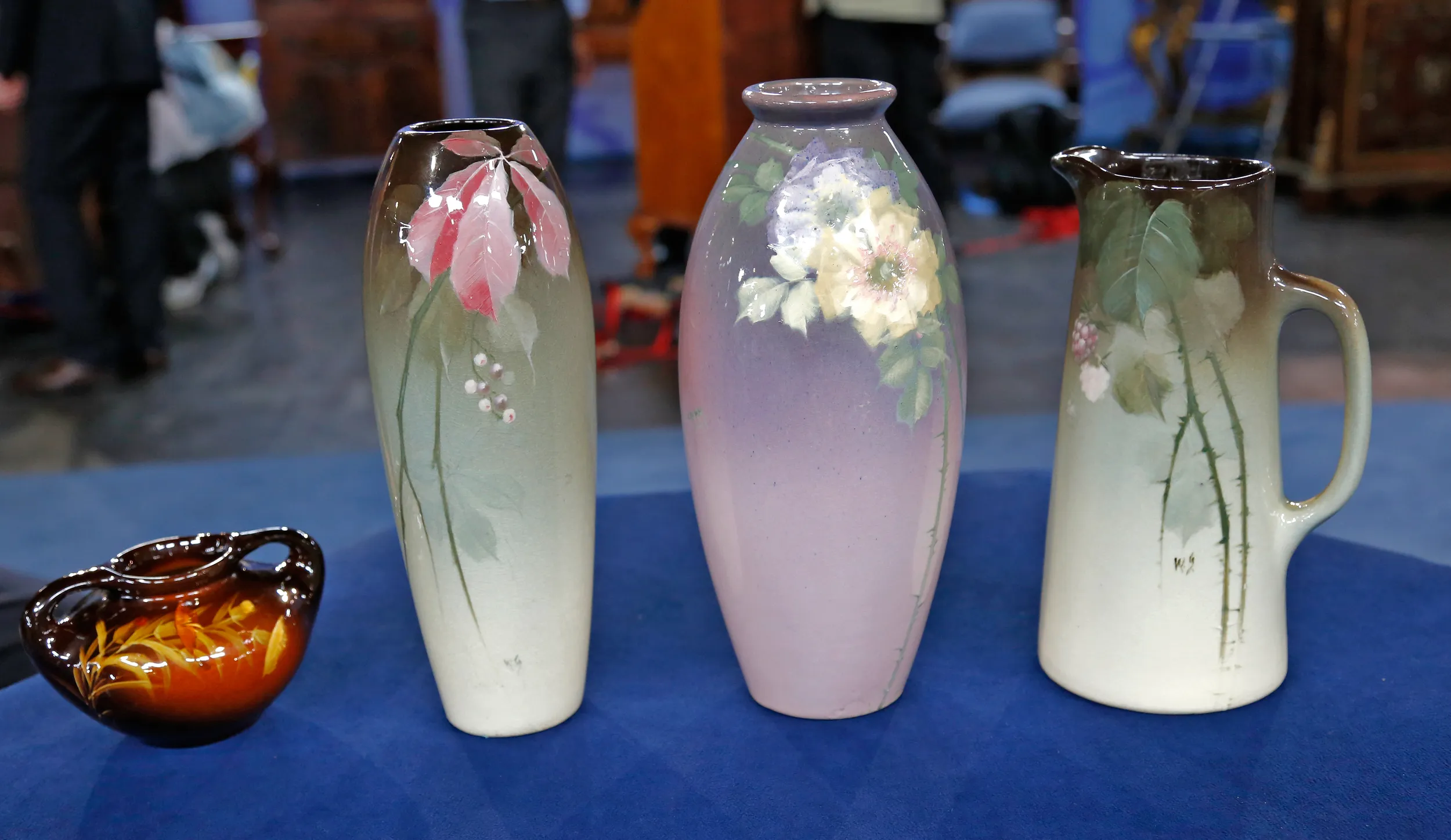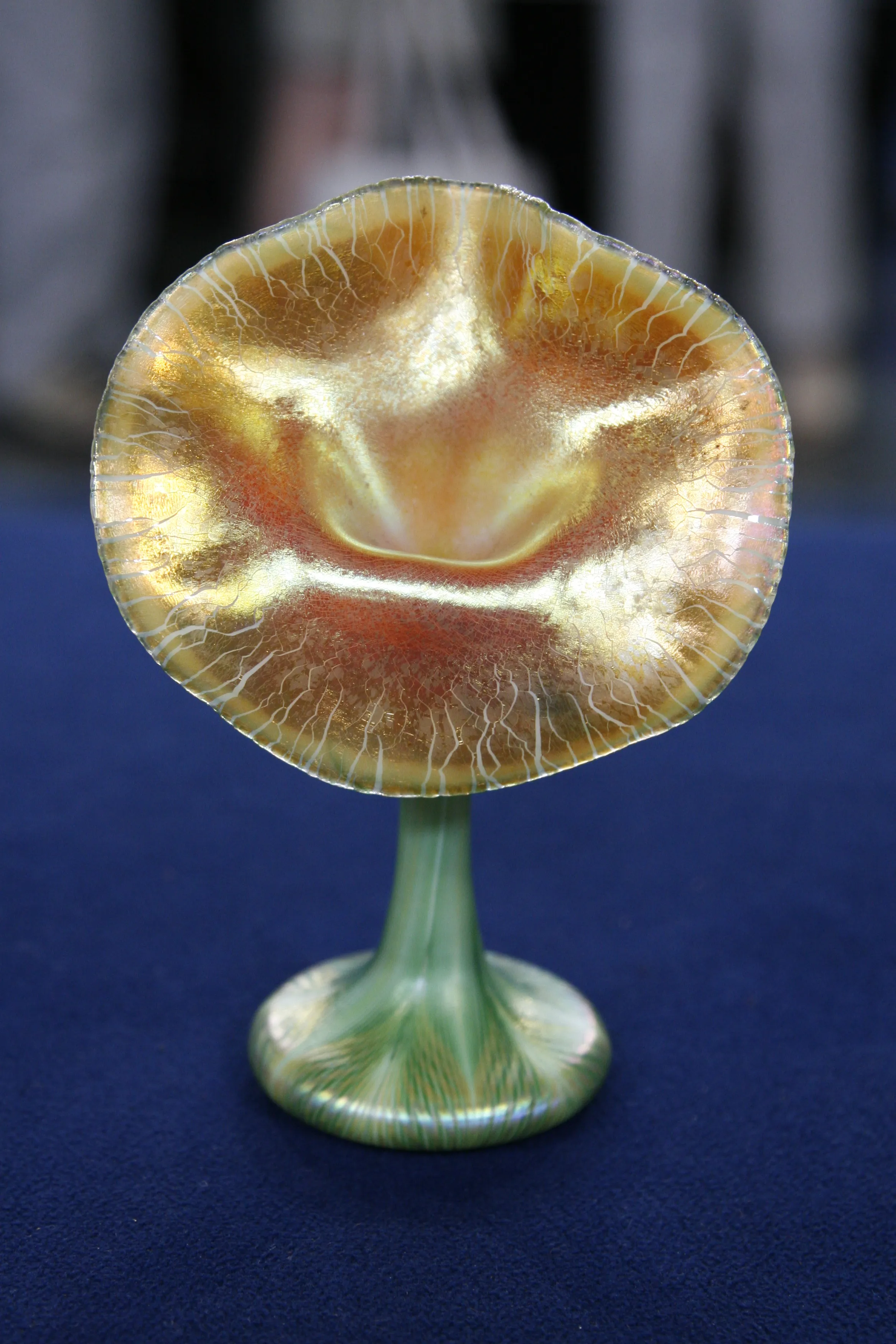GUEST: My grandfather was William Henry Stemm, who was an artist at the Weller Pottery later on, but first he started at the Owens Pottery. He had worked before that for Ronchetti, the French muralist. My grandfather was his apprentice. Ronchetti was a very dangerous work in that he had scaffolding that was way up in the domes of buildings. And he also traveled. My grandmother told my grandfather that she wouldn't marry him if he was gone so much and in such a dangerous line of work. So he began to work at Owens Pottery. And our family has always been grateful because providentially, on the next job that Mr. Ronchetti had, the scaffolding broke and he fell and hit the balcony and was killed. And my grandfather was always right beside him, so he would have been killed too. I have a picture here of my grandfather and grandmother and myself when I was just six weeks old.
APPRAISER: Owens Pottery didn't last very long because J.B. Owens died, and they closed by 1907, which is probably why your grandfather then went to work for Weller.
GUEST: Okay, I didn't realize that.
APPRAISER: They were in the same town of Zanesville, Ohio. There were crosstown rivals, along with the Roseville Pottery Company. A lot of competition. Great clay deposits in the area. There were several rivers that converged in Zanesville, Ohio, so it provided power, access to the company. So it was the center of American art pottery around the turn of the century. All three companies in fact copy the fame of Rookwood. Rookwood was in Cincinnati, Ohio, and Rookwood made a standard brown glaze in the '80s into the '90s. And this piece of Owens that your grandfather did is called utopian ware, which is their name for standard brown glaze. Rookwood made iris glaze, which instead of the brown background and darker colors, was pastel backgrounds and pastel colors. Owens had their copy, they called it lotus. And Weller had their copy, which they called Eocean. And what you have here are three pieces of Weller Eocean. This one is marked by the Weller Company. What's also interesting is this artist's signature on the side, and that is...
GUEST: Stemm-- William Henry Stemm.
APPRAISER: I've seen the signature before, I've had pieces by him, but I'm not really familiar with the artist. So to have this family background, it rounds out my education in the material, my understanding of it.
GUEST: Later on, Mr. Weller would not allow the artists to sign them.
APPRAISER: He was crafty, Mr. Weller.
GUEST: He was. My grandfather didn't think he was a very good man.
APPRAISER: I don't know that anybody who worked for him had anything good to say about him. So in terms of value of these pieces, all made in Zanesville, Ohio, between 1905 and about 1910, the brown glaze pieces don't bring all that much. For you, it's family value, historical value.
GUEST: Right, exactly.
APPRAISER: And a small, brown glazed piece like this today is worth about $100 to $150 at auction at most.
GUEST: Okay.
APPRAISER: This is one of the first of the three Eocean pieces that you have by your grandfather, signed on the front...
GUEST: "W.S."
APPRAISER: Because it's a pitcher, it's worth a little bit less. This is worth at auction between $800 and $1,000.
GUEST: Okay.
APPRAISER: This is very similar to the pitcher, again signed "W.S." on the front. But because it's a vase, it's worth about $1,200 to $1,600.
GUEST: Wow.
APPRAISER: And finally, this is a really pretty one. It's just bigger, it's better, it's got better colors, the background tends to blush so it's Eocean rose, which pumps it up a little bit. This at auction is between $1,500 and $2,000.
GUEST: That's amazing.

